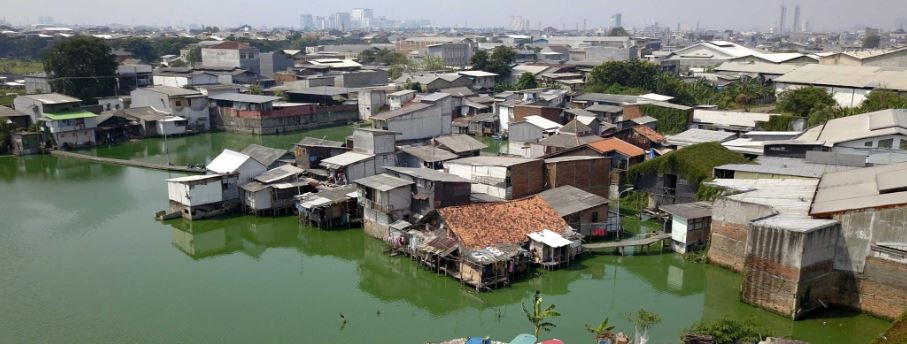Not Jakarta. Indonesia Forced to Plan for a New Capital

The news from Indonesia, for people in the know, was hardly shocking. But it is a warning to many other cities, coastal and otherwise, that could find themselves in a similar predicament , sooner than later. Jakarta has been recorded as sinking at the rate of upto 25 cm per year for some parts, an exceedingly high rate for a coastal city that is on average, just under 8 metres above sea level.
North Jakarta, a port city, has sunk 2.5m in 10 years and continues to sink by as much as 25cm a year in some parts, more than double the global average for coastal megacities. According to some media report, Jakarta is sinking by an average of 1-15cm a year and almost half the city now sits below sea level.
Not just the north part, the rest of Jakarta is sinking too, even if at a slower rate. The report says that in West Jakarta, the ground is sinking by as much as 15cm annually, by 10cm annually in the east, 2 cm in Central Jakarta and just 1cm in South Jakarta.
Other cities in the region notably Bangkok, the Thai capital, and even Manila, the Philippines capital, face a similar predicament, although their rate of sinking has been much slower, so far. Elsewhere, memories are still fresh about the horrors low lying cities like New Orleans experienced with extreme weather events.
Though the city planners in Jakarta had been working on a giant sea wall for well over a decade, it was always considered to be too little too late. The project worth an estimated US$42 billion is to be executed in three stages, starting with strengthening 30km of existing coastal dams and creating 17 artificial islands. This would be followed by building giant sea walls on the western and eastern sides of the bay. Plans that have been mired in political sniping and funding delays,.
Indonesian President, Joko Widodo had spoken for most of his countrymen when he announced his intent to build a new capital last year itself. The island of Borneo has been chosen, simply because the main island Java, where the majority (57 percent) of the country’s population lives, is particularly susceptible to extreme weather events and earthquakes.
Jakarta holds lessons for cities across Asia, including cities in India. The crisis, caused by decades of mindless development, lack of urban planning by vested interests and misrule by politicians who have served private interests over those of the public is a common issue across cities in India too. While not all of them are on the coast and susceptible to sinking, the damage we are ding is no less when it comes to building sustainable cities.
In Jakarta’s case, around 40 percent of the city now lies below current sea levels. With nearby coastal districts like Muara Baru having sunk as much as 4.3 metres in recent years, the writing was on the wall.
The biggest blame has been laid on groundwater extraction , which exceeded incoming water from rain and rivers for years. 630 million cubic metres of water is pumped out each year. Water that is simply not replaced thanks in no small measure by upto 97 percent of the city being covered in concrete. Something we experience for its heat sink effect too, besides water run off. Other cities that faced the sinking feeling, like Tokyo in the 20th century, managed to cut down on groundwater extraction to stop the slide, but not Jakarta apparently. Piped water, sourced sustainably could have been an option, but clearly the Indonesians have given up on the idea, in a city where barely 5 percent of the population has access to piped connections.
Incredibly, the sheer weight of the buildings and developments above land have also been blamed for the sinking. The city’s over 10 million core residents are packed in tight, over 5 times more than cities like Sydney, or twice as much as London, putting immense pressure on the land with built up areas.
On top of this, many of Jakarta’s natural flood defences from the rising sea, such as mangroves, have been removed to make way for settlements. Building on flood plains and coastal marshes has also been allowed to continue putting these communities in real danger. Reminds you of Mumbai and Chennai, doesn’t it?
The alarm has been rung, the big question is, will city planners hear it?





I knew only vaguely that Jakarta had a sinking problem but had no clue to its scale. When you read about some barely inhabited island being claimed by the sea it is hard to relate to the event but when it happens to a city of Jakarta’s size it is something else altogether. Apocalyptic…